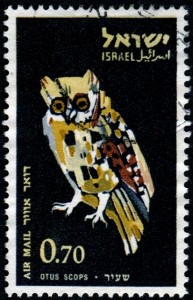Week 7 – 20 August 2016:
When Snakes Control the Show
Why might a female Acadian Flycatcher in Connecticut choose to produce three eggs instead of four? Why would a Eurasian Blackbird overwintering in northern Africa choose to fly all the way to Iceland to breed instead of staying put? Why would a Shiny Cowbird in Argentina choose to lay its eggs in the nest of a Rufous-collared Sparrow instead of raising its own chicks? The world of birds is full of odd life history riddles that all seem to have the same solution. By behaving one way instead of another, an individual is attempting to maximize its lifetime reproductive success. As with anatomical and physiological characteristics, many behaviours are shaped by natural selection.
So why, then, do Japanese Scops-owls and Ryukyu Scops-owls, birds of roughly the same size and shape, living in the same place at the same time, choose to breed more than a month apart?
The question was recently tackled by Masahiro Toyama and colleagues from Hokkaido University and the Kyushu Research Centre. Their study sites were the Kunigami Forest Park and Yona Experimental Forest on Okinawa Island, Japan. One of an island chain, and part of Japan’s southern-most prefecture, Okinawa and its forests are subtropical, without the very large seasonal differences in climate found in temperate regions.
Their subjects were two species of scops-owl, a group of about 70 species, known for their small size and spectacularly complex classification. Both the Japanese and Ryukyu scops-owls are comparatively small, between 20 and 25 cm (8 to 10 inches) tall, and I would probably have trouble telling them apart even if I had one in each hand and a field guide open between them.
Even so, these birds are, most certainly different, and the timing of their breeding seasons was sufficiently dissimilar to attract attention. Toyama et al. utilized cameras and nest boxes to look into the factors that might have shaped this difference in timing.
They found that mean egg-laying date of the Japanese Scops-owl was 17 March, with young departing their nests between early May and early June. The mean egg-laying date of Ryukyu Scops-owls was 8 May, and young did not leave the nest until late June to mid-July. Curiously, while Ryukyu Scops-owls averaged 2.76 eggs per nest, and the Japanese Scops-owls averaged just 2.29 eggs per nest, there was no difference between the species in the mean number of young that survived to leave the nest.
How did Toyama and his colleagues resolve the puzzle? The Ryukyu Scops-owl is a dietary specialist, feeding mostly on bush-crickets. These birds can only breed later in the Spring when their insect food is abundant. Unfortunately, this is the time of year when it is warm enough for the principal predator of eggs and chicks, the Ryukyu odd-tooth snake, to be active. The Japanese Scops-owl is able to avoid most of the predation of its eggs and chicks by snakes by breeding earlier in the cooler part of Spring. Being a dietary generalist, feeding on insects, centipedes, and small reptiles, birds and mammals, a Japanese Scops-owl can feed its chicks when a Ryukyu Scops-owl couldn’t. Individuals of both species are doing what they can to raise as many chicks as possible.
When I contacted him, Toyama explained that he has been investigating species differences in nest site selection by different scops owls. It seems that the decision to build a nest in one spot instead of another is related to seasonal changes in predation risk. Competition between members of the two owl species may also help to drive their differences in breeding season. I asked whether the Ryukyu odd-tooth snake was a problem for researchers on Okinawa. Toyama reassured me that these snakes are non-venomous.
Toyama, M., N. Kotaka and I. Koizumi. 2015. Breeding times and nest predation rates of sympatric scops owls with different dietary niche breadth. Can. J. Zool. 93:841-847.
Photo credits: Scops Owl stamp, designed by Israeli artist Miriam Karol (1926-1994), Israel, 1963 - au.pinterest.com; photograph of a Ryukyu Scops owl – shortwing.co.uk



